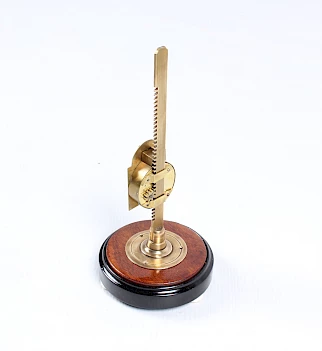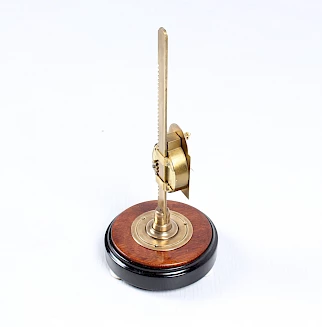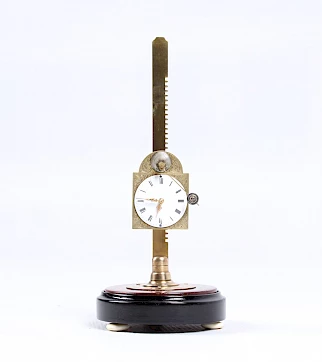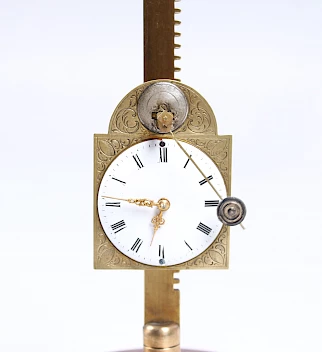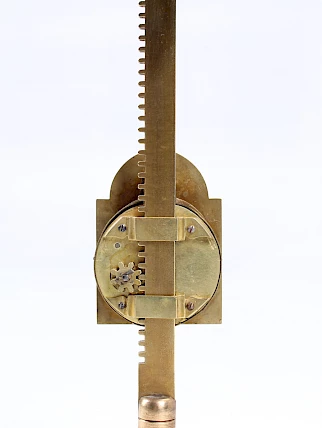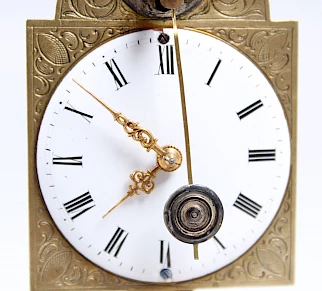Miniature Climbing Saw Clock
Southern Germany
Brass, enamel, wood
early 19th c.
Dimensions: height 23 cm, diameter of the base 11 cm
Description:
Rare small saw clock with only 23 cm height.
Running time 24 hours.
The ebonised wood base stands on three flat round alabaster feet.
The clock base is made of mahogany.
In the centre is an upright brass toothed bar, the so-called saw, which gives the clock its name.
The small (only 4 cm in diameter) enamelled dial with Roman numerals is mounted on an ornately engraved round-arched brass shield.
The gilded hands are finely hand-sawn and filed.
In front of the dial swings the face pendulum - a so-called front zappler.
Saw clocks are generally known for the fact that their movements climb down a rack, sometimes still weighted with additional weight. The energy to drive the escapement is therefore supplied by the clock's own weight. This is what we call a gravity-driven clock.
The clock offered here, however, is a rare version of the ascending saw clock. To wind it up, it must be pressed down against the tension of a spring. Over the course of 24 hours, the clock then slowly climbs upwards on the saw.
Condition: Flawless movement and case condition. A glass bell is not present.
Price: This clock is no longer available.
You can find more about the interesting subject of saw clocks in the following reference books:
Mühe / Vogel - Faszination Uhren p. 38, 172
Radko Kyncl - Illustrated Encyclopaedia of Clocks p. 194
Heuer / Maurice - European Pendulum Clocks p. 258
Article found under: Clocks
Also interesting
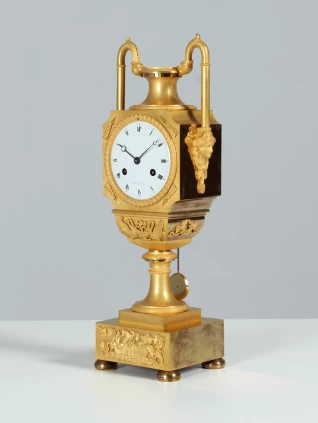
Antique Vase Clock
France
fire-gilt bronze
Empire around 1820

Jaeger LeCoultre - Atmos Constellation
Switzerland
Brass gold plated
Year of manufacture 1967

Antique dressing table - stamped Chapuis
Brussels
Mahogany
Empire around 1810

